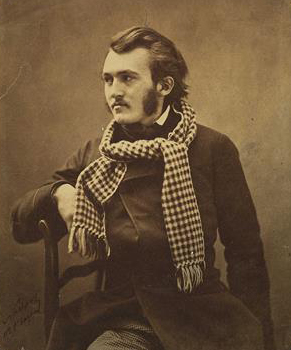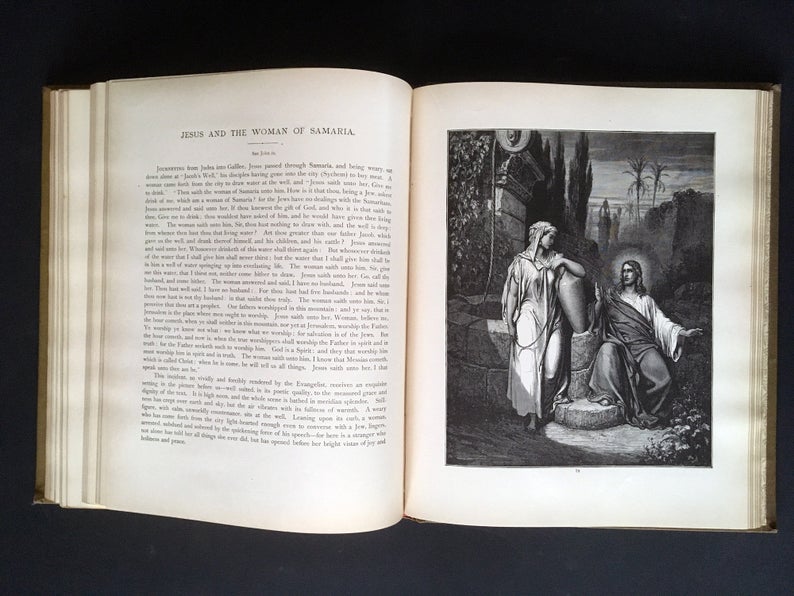In our last article, we explored ways museums organize educator content. We considered how, in the
same way that a museum must organize its physical space in a way that optimizes the experience of its
visitors, so must it organize its digital space in a way that enables educators (or any visitors, for that
matter) to navigate with ease.
We now turn to the content itself. The rooms of a museum display paintings, sculptures, and historical
artifacts, and the educator pages of a museum’s website feature lesson plans, videos, and other study
resources. What does some of the best educator content look like? In this article we will explore the
educator content on the websites we surveyed previously: (1) The Detroit Institute of Arts, (2) The North
Carolina Museum of Art, (3) The National WWII Museum, and (4) The 9/11 Memorial & Museum. We
will survey three areas of content: (1) Videos & Articles, (2) Basic Student Activities, and (3) Lesson Plans.
Who Is Educator Content for? A Variety of Visitors and Needs
First, it is worth pausing to envision who will be using this part of the website and how they will be using it:
- Educators of Different Grade Levels – Since museums are for students of all ages, educator content
on museum websites may serve teachers and students at all of these levels. While there is certainly
some overlap, the kinds of materials a kindergarten teacher is looking for is not identical to what a
high school teacher will want. - Visitors and Non-Visitors – Some educators are looking for material to use in conjunction with a
field trip to the museum. Content used for this purpose can greatly enhance a trip; Museum
Director Rebecca Shulman has pointed out that “research demonstrates that field trips are more
effective when teachers make connections before and after the visit” (“Why Should Schools Visit
Museums?”). At the same time, some website visitors may be browsing the museum’s website with
no plans to visit the museum. In these cases, they are looking for material that can stand alone or
simply supplement lessons they are already preparing for their students. - Teachers and Students – In addition to teachers, students also visit museum websites. Some
students may discover a website on their own while researching an artist or historical era; others
might be directed to the website by a teacher in order to watch a video or participate in a webinar.
Today’s students are increasingly expected to be able to navigate the internet well and find good
quality sources for what they are studying, and museum websites (both the overall website and the
education resources) have the potential to serve this purpose very effectively.
Videos & Informational Pages
Videos are a common feature of educator resource pages. Although making a good video takes much
more time and effort than posting text and images, the effort can be worthwhile because of the way a
video allows visitors to view pieces from an exhibition, hear directly from a curator, or even take a
virtual tour of a museum.
Most videos fit into one of three categories:
1. Shorter Informational Video Clips
A common type of video is a 1-5 minute clip describing a work of art, an interview with an artist, an
exploration of a theme, or a behind-the-scenes look at an aspect of the museum like preserving and
restoring works of art.
The North Carolina Museum of Art features dozens of such videos. Videos can be searched or browsed
according to grade level, subject areas (drama, social studies, etc.), and concepts (identity, meaning,
power, storytelling, etc.). The videos, typically narrated by curators or educators, could be viewed by
students either independently or in a classroom and are often similar to what a docent might share with
a group in a museum.
Similarly, the National WWII Museum’s Distance Learning Video Archive and Teaching Resources Page
feature instructional videos, archival footage, and documentary clips on topics like “Final Hours Before
D-Day” and “What Would You Do? Scenario: Battle of the Philippine Sea” that could be easily
incorporated into history or social studies lessons.
2. Videos for Teachers
Other videos may be directly geared for teachers—for instance, explaining how to lead a student
activity.
A clip of an educator in action before a group of students, such as the NCMA’s video on Developing
Visual Literacy, can be an effective way to demonstrate how a particular teaching strategy works.
“Courageous Conversations,” 5-7 minute videos from the Detroit Institute of Arts, feature a diverse
group of high school students using works of art to facilitate discussions on challenging topics like race
and identity. The videos include discussion questions that teachers can use in their own classroom
conversations.
3. Longer Programs and Virtual Field Trips
Finally, longer videos that range from thirty minutes to an hour or more include recordings of webinars,
virtual field trips, and special programming directed toward schools.
The 9/11 Memorial & Museum puts out an annual “Anniversary in the Schools” program that highlights
first-person accounts of the September 11 attacks. Students also have the opportunity to participate in a live chat with staff from the museum. Schools can also sign up for virtual tours (free for NYC schools and available for a fee for others) in which museum staff use Zoom to interactively lead students through the museum’s artifacts and exhibitions.
The National WWII Museum features a number of longer videos, such as “African American Experiences
in WWII Webinar” and “Manhattan Project Electronic Field trip.” Videos like these feature lecturers,
reenactors, interactions with students, and archival footage to bring these historical topics to life.
Informational Pages
Some sites include informational pages on particular museum pieces in their education section. The
North Carolina Museum of Art’s NCMALearn, an extension of its main site located on a subdomain (learn.ncartmuseum.org), includes special descriptions of artists and works of art that go beyond the
information available on the main site. For instance, a ceremonial drinking vessel from Peru includes a
longer description than that given on the object’s entry on the main site, along with links to additional
resources for students and teachers. The page is designed to be especially very helpful for a teacher or
student learning more about a particular piece.
A key question (and potential dilemma) for site designers is how much this content should overlap with
the material already provided on the main page. On one hand, a museum will already have information
on exhibitions and individual objects on its main site. A student researching a work could just go to the
main site to learn about it. On the other hand, having a separate area can allow the site designer to
optimize the site’s content, design, and navigational setup for the needs of teachers and students. At
the end of the day, it is up to the museum and its site designer to weigh the advantages and
disadvantages of each method and to determine the best approach given its goals for the website.
Enhancing a Museum’s Online Presence
It is worth noting that special content like videos also help boost a museum’s online presence because
they are easily discoverable through a web search, especially when posted to outside sites like YouTube
and Vimeo. A teacher or student searching the web or YouTube for information on a work of art or
historical era may end up on a museum’s website not because of any initial interest in or knowledge of
the museum, but because a relevant video ended up being a top search result.
Student Activities
Suggested student activities are typically fairly simple, and either help students engage with particular
parts of a museum’s collection or engage in creative or reflective activities inspired by the collection.
Some activities may be done by students on their own, while others are a class effort.
Longer lesson plans also include student activities, of course, but what distinguishes this type is that
they are stand-alone activities that are only 1-2 pages long, don’t usually include special instructions for
teachers, and can therefore be simply read and completed by a teacher, parent, or student on their own
or in a group. Here are some examples:
Activities to do at the museum:
- Social-Emotional Learning and Art: Scavenger Hunt (Detroit Institute of Arts) – While wandering the
museum, students seek out works of art that interest them and make connections between these
works and qualities like “creativity,” “compassion,” “gratitude,” “courage,” etc., which they
recognize in them. They write personal connections with the artwork and the qualities. The activity
may be downloaded as a PDF for teachers to print and distribute to students. (It is geared toward
field trips, but with high-quality images of museums’ collections available online, it can also easily be
done at school or at home.)
Activities that can be done at school or at home:
- Empathy Poem (North Carolina Museum of Art) – A work of art is chosen for reflection, and
students reflect on what a particular person in the artwork would say if he or she could speak. They
write down their ideas and then work together to turn their ideas into a poem. - Family Activities: Gyre (North Carolina Museum of Art) – Inspired by Thomas Sayre’s natural
sculpture Gyre, students go outside to make their own works of art using natural materials or using
nature itself as an inspiration. - Writing & Discussion Activities (Detroit Institute of Arts) – Students explore recommended works of
art by imaginatively using their five senses, thinking through a work’s point of view, and writing or
drawing what they think happened before and after a dramatic scene. - How Big Was World War II? (The National WWII Museum) – A series of tables with numbers about
various wars help students create graphs on the number of lives lost in each war, cost of each war,
and division of branches of military service in each war. - At-Home Activities (9/11 Memorial & Museum) – Geared toward younger students, these include
various arts and crafts activities, including writing letters or drawing pictures for heroes in their own
community, designing their own creative first responder badges, and more. They can be easily done
at home or in a classroom.
Lesson Plans
Many museums offer lessons plans for teachers. A good lesson plan, as any educator would tell you,
provides much more than information or activities, typically including:
- The lesson’s essential purposes, listed as “goals,” “objectives,” and/or “student learning outcomes”
- Broader learning goals with which the lesson corresponds as described in a state’s particular set of
standards, Common Core State Standards, National Arts Standards, National Standards for History,
etc. - Lists of needed materials
- An estimate of how much time the lesson will take
- The grade levels appropriate for the lesson
Below are some examples of lesson plans from different museum sites:
3 Lesson Plans for Classroom Use (Apart from a Trip to the Museum)
Images of Immigration (North Carolina Museum of Art)
Lesson plans are typically uploaded as PDFs, but the North Carolina Museum of Art’s website features all of the content on the website itself. Underneath basic information on goals and learning outcomes are four tabs for “Activities,” “Assessments,” “Lesson Resources,” and “Related Content.” (While the content under all four sections is not visible all at once, it does all show up when a user goes to print the page.)
In this lesson, high school students address the question, “How is immigration depicted in American art
during the 19th century?” Using an image from the museum’s collection—A German Immigrant
Inquiring His Way, by Charles Felix Blauvelt—as a starting point, students also examine a political
cartoon by Thomas Nast and fill out an image analysis chart on each picture. They then engage in group
discussion using questions listed in the lesson plan.
Lesson Resources include a list of key vocabulary terms important to the lesson, books that could be
helpful for background information, and a link to the Nast cartoon to be used in the lesson plan. The
“Related Content” tab features images from the museum’s collection relevant to the lesson plan (in this
case, it is only the image used in the lesson, but in other lesson plans, it may include others).
“The World Must Know”: Public Remembrance and the Holocaust (The National WWII Museum)
Written for middle and high school students, this lesson plan is intended to take 1-2 class periods and
focuses on how nations have remembered the Holocaust. It takes students through the historical
background of the Holocaust, including an oral history video featured on the museum’s website.
Students think through the Holocaust and how it has been remembered, studying prominent memorials
throughout Europe. Students write about these memorials and discuss their thoughts and observations
with the class. It is part of a broader curriculum called “Liberation & Legacy.”
Balancing National Security and Civil Liberties (9/11 Memorial & Museum)
A third example, written for high school students and also intended to take 1-2 class periods, comes
from the 9/11 Memorial & Museum and centers around the question, “How does the balance between
ensuring national security and protecting civil liberties shift after a terrorist attack?” The lesson uses a
cover image from a 2001 issue of The New Yorker as a starting point and then provides background
information on debates over the Patriot Act in Congress. After researching, students think and talk
through how to balance national security with civil liberties, looking at how that story has played out in
recent years. Finally, a video clip of U.S. Supreme Justice Sonia Sotomayor sparks final reflections on the
question.
A Lesson Plan Designed Around a Field Trip to the Museum
The Act of Remembering (Detroit Institute of Arts)
This lesson plan, from the Detroit Institute of Arts, is to be used in conjunction with a trip to a special
exhibition at the museum which features ofrenda altars used to commemorate Día de Muertos (the Day
of the Dead). The site features five different lesson plans (downloadable as PDFs), written by local
Spanish teachers.
This is an example of a very thorough lesson plan, intended to take up to eight or more days of class to
complete all the activities, with a trip to the museum in the middle. Days are divided into “Pre-Visit
Activities” (Days 1-5), “During Visit” (Day 6), and “Post Visit” (Days 7 and later). Activities include video
clips, a study of ofrendas through Google’s Arts & Culture site, graphic organizers, writing assignments,
discussions, and a culminating project in which each student creates his or her own “act of
remembering.”
While few classes will have the time to spend a week or more on activities centered around a museum
exhibition, a thorough lesson plan like this one at least provides teachers with a wide variety of ideas
about activities, even if they do not end up using all of them. Overall, the more class time spent
anticipating and reflecting on a trip to a museum will make the experience much more powerful,
meaningful, and lasting.
Is It Time to Create or Expand Your Educator Resources Page?
Museums have a great deal to offer to teachers and students, and the growing number of educator
resources online reflect their potential. As we have seen in this article, many of these resources can be
used in a classroom or at home without a trip to the museum. And when they can be used in
conjunction with a field trip—even better!
Some especially well-funded museums are clearly able to offer more resources than others. (Some have
even developed their own online games!) But keep in mind that not every museum needs something
impressive or elaborate. And every museum is already involved in the task of educating the students
who visit on a regular basis and making connections with the teachers who bring those students.
The sites described in this article show the wide variety of options museums can pursue. Whether a
museum is working on its next sixty-second video or its next sixty-minute one, and whether its teacher
resources include simple activities or lengthy and detailed lesson plans, every museum can certainly
work on continuing to improve this key area of its website. By continuing to make it a priority over time,
it can help share the best parts of a museum’s collection not only with local educators, but also with
teachers and students around the world.










